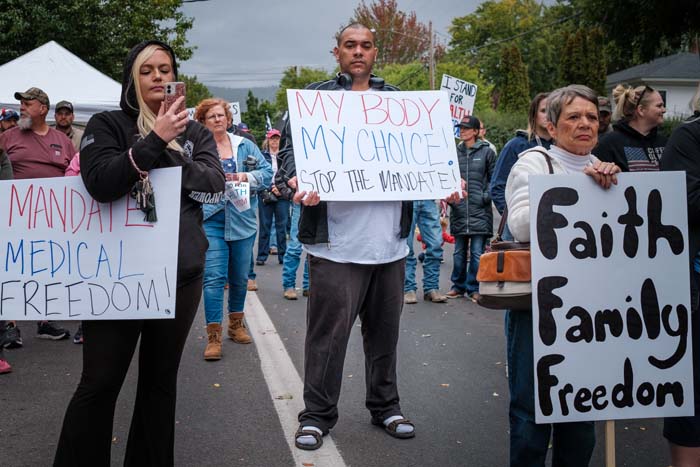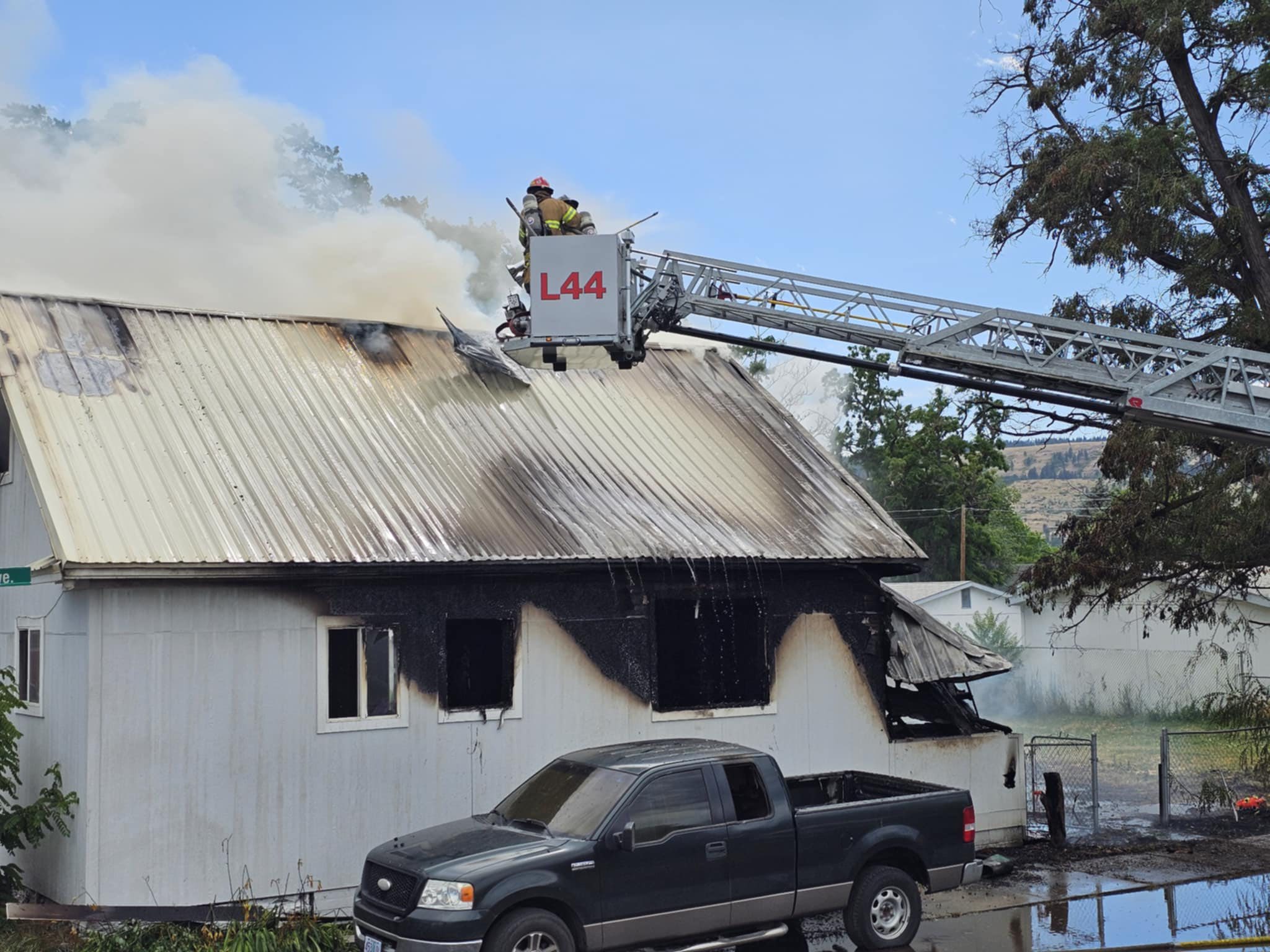Nearly 1 in 5 Oregonians have no plans to get vaccinated, UO study finds
Published 3:00 pm Tuesday, December 28, 2021

- Demonstrators outside of La Grande City Hall protest against vaccine mandates on Saturday, Sept. 18, 2021.
SALEM — Nearly half of Oregonians know someone who died from COVID-19, yet their familiarity with the disease doesn’t make them more likely to get vaccinated against it, University of Oregon researchers have found.
That’s just one of the illuminating bits of information to be gleaned from the research, which is based on responses from a representative sample of more than 700 Oregonians.
The researchers’ findings about unvaccinated Oregonians are particularly pertinent now, given that the highly contagious omicron variant is expected to sweep the state in the coming weeks.
The variant is so transmissible that just about everyone is likely to come in contact with it, health officials have said. While omicron is notable for its ability to evade immune system defenses, vaccinated people are at much lower risk of hospitalization from an infection than unvaccinated people, research shows.
Dr. Benjamin Clark and Robert Parker, from the University of Oregon’s Institute for Policy Research and Engagement, surveyed 722 Oregonians on a host of COVID-19 subtopics. The researchers tried to get to the bottom of, among other things, people’s perceptions of the virus, who is and is not getting vaccinated, and the impact of disinformation.
Their findings, published last week, showed that while vaccinations have climbed in recent months, there are stubborn pockets of resistance that appear unlikely to budge.
“Despite a high vaccination rate, parts of Oregon will struggle more than others in the coming months,” the researchers wrote.
There are signs, though, that vaccination numbers could continue to climb. Namely, the share of Oregonians who say they definitely won’t get shots dropped to 18%, down 4 percentage points since the researchers’ last survey, in spring. The difference falls just outside the sample’s margin of error, so there is a chance the results don’t reflect a significant change in attitudes in the real world.
The surge in infections during the delta wave also coincided with growing vaccination rates in Oregon, and more people could choose to get the jab in coming weeks in response to the omicron surge and the state’s increased outreach efforts.
The greatest vaccination challenge, per the researchers, centers on the rural-urban divide. The researchers’ statistical analysis confirms that counties with the lowest vaccination rates have the highest COVID-19 death rates. Those counties also happen to be exclusively rural and include Lake, Malheur, Harney, Grant and Gilliam counties.
About 1 in 3 rural Oregonians hasn’t had even one shot of the vaccine, compared to about 1 in 5 urban Oregonians. Of the rural people who haven’t gotten shots, 74% say they’ll never do it, compared to 69% of urban people who aren’t vaccinated. The difference is right on the edge of the margin of error for the urban-rural analysis, so it’s not entirely clear how significant the result is.
“It will be vital to continue finding ways to persuade, entice, and encourage residents everywhere, particularly rural Oregonians, to get vaccinated,” the researchers wrote.
The most reliable indicator of whether someone has received a shot, per Clark’s analysis, is their level of education — more so even than their income or location. The higher a survey respondent’s education level, the more likely they were to say they’ve been vaccinated, Clark found.
A regular course of shots substantially reduces the risk of severe illness and death, research shows. Booster shots, meanwhile, reduce the risk of infection overall, which is why Oregon health officials have asked 1 million more Oregonians to get boosted by the end of January.
As of Dec. 23, 1 in 4 Oregonians — about 1.1 million people — had received boosters, according to Oregon Health Authority data. Just over 71% have received at least one shot.
Last week’s study was the third installment of Clark’s research, following the institute’s first survey-based study of Oregonians’ attitudes toward COVID-19 one year ago, and another report published this spring.
Clark and Parker issued five recommendations based on their research: increasing outreach to rural Oregon; continuing or even expanding vaccine mandates; two recommendations on enhancing enforcement of behavior and vaccine mandates; and continuing to fight disinformation.









